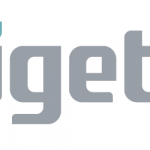The quantum-resilient Web 3.0

(Forbes)Konstantin Vilk, a co-founder and CXO of QuSecure, is the author of a recent article explaining Web 3.0. IQT-News summarizes the key issues outlined by Vilk. His comprehensive discussion is well worth the time to read in-full.
The new, quantum-resilient Web 3.0 is the latest phase of the internet’s evolution. It is designed to be capable of delivering a more private, resilient, faster and more personalized user experience. Built using a combination of artificial intelligence, machine learning, the semantic web and blockchain security to keep information safe and secure, Web 3.0 will be more intelligent, delivering rich search results more quickly.
Web 3.0, which had been in progress for quite some time now, is being built on four principles: openness, trustless, permissionless and ubiquitousness. This means that decentralization is at the center of this latest version of the web and that data will be connected in a decentralized way. Unlike Web 2.0 where data is stored in centralized storage locations, Web 3.0 users will be able to interact with data using artificial intelligence and machine learning technology.
Permissionless Web 3.0 is the idea that control and ownership of data and its privacy are given to the data owner, preventing (to some extent) corporations from owning it or government regulations from controlling it. As mentioned in trustless, permissionless means that neither party in a transaction or interaction needs or requires permission from a third party (such as a service provider or government) before it can take place.
When Web 3.0 is finally available, we will be able to access the web from any place and at any time, making this a ubiquitous aspect of Web 3.0 thanks to the Internet of Things (IoT). IoT refers to physical objects or devices embedded with sensors, software and other technology integrations. These objects and devices can connect and exchange data with other connected devices and systems through the internet. Examples of these connected devices include Fitbits, car navigation systems, Siri, home security systems and even self-driving cars.
We’ve observed from Web 2.0 that many companies creating applications also use them to collect data, access it and control it—regardless of the individual’s desire to keep that data private. Many of these same companies failed to protect our private and confidential data, as evident by the growing number of breaches. Due to these practices, that confidential data is not safe, private or adequately protected from entities that would misuse it. MACH37 notes that “with centralized servers, it is easy for governments to intervene, control, or shut down applications as they see fit” and that Web 3.0 “aims to solve many of these shortcomings by fundamentally rethinking how we architect and interact with applications from the ground up.
How we keep that principle of privacy is in the application of security. When we exchange information in a trust relationship, we also must ensure that it is safe from unauthorized eyes—whether they’re attackers, governments or corporations. To that end, we need to continue the development of future-proof technologies to power the open Web 3.0 with quantum-resilient communication channels and data protection methods, protocols that are faster and more resilient, and better methods to maintain data confidentiality.
Sandra K. Helsel, Ph.D. has been researching and reporting on frontier technologies since 1990. She has her Ph.D. from the University of Arizona.



















